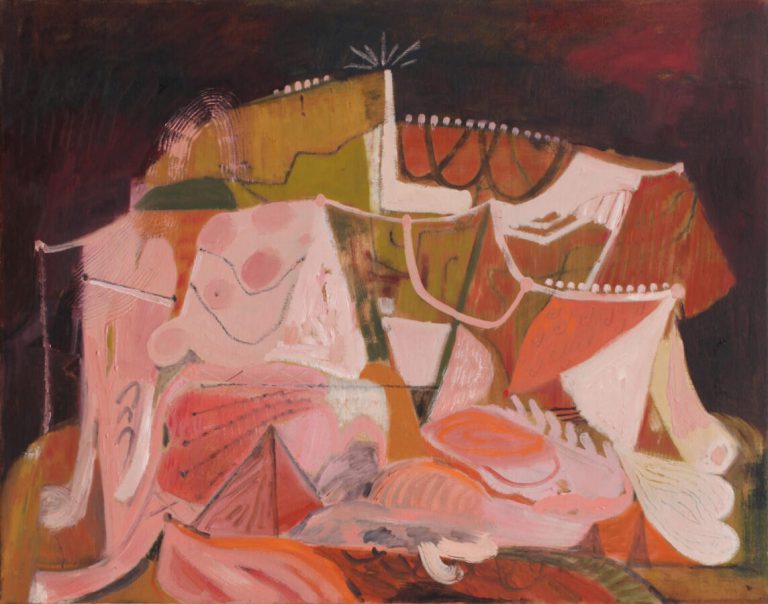Soumya Netrabile (b. 1966) is a contemporary abstract painter and ceramist based in the Chicago area of the United States. Her paintings are a fusion of anatomical, organic, and plant forms that build imaginary landscapes with a color palette that oscillates between vibrant colors and muted tones. They feel like lucid daydreams that transform, shapeshift and ignite the imagination.
With her ceramic sculptures, she takes recognizable, familiar forms and reinvents them to take on new identities. Soumya has always had a strong sense of herself as a maker and she can’t remember a time when she didn’t think of herself as an artist. We delve into her practice to learn more about her work.
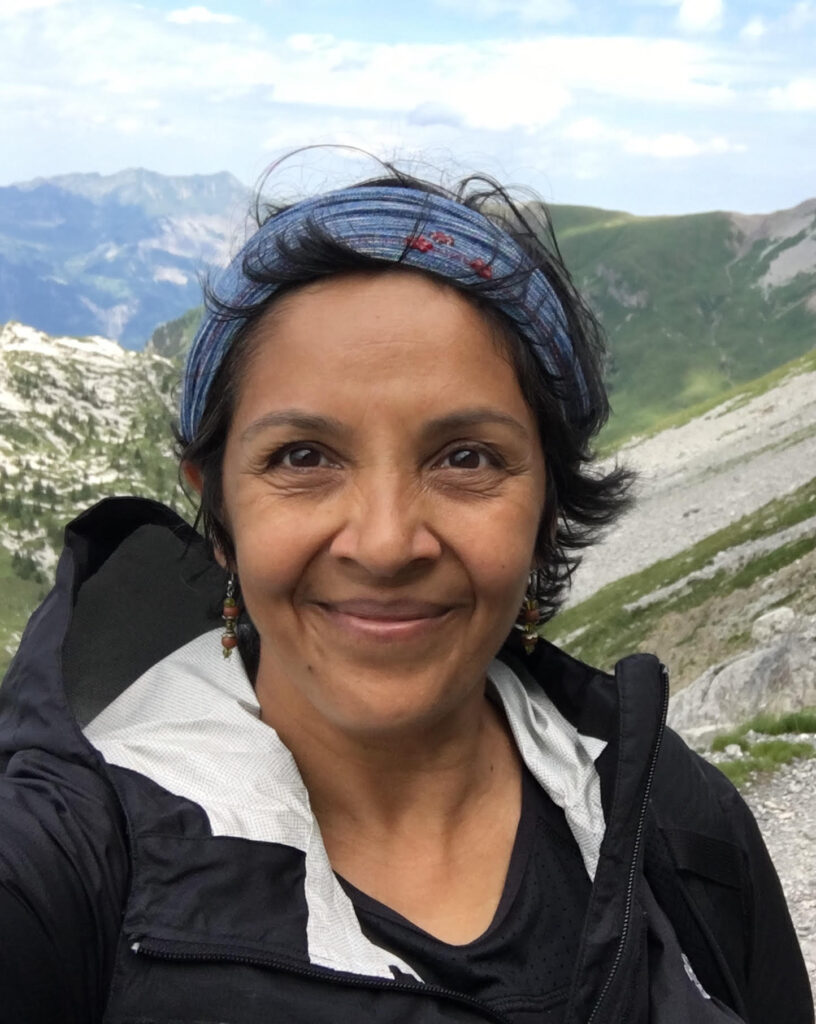
Backstory
Tell us about your background. Where are you from originally and where did you grow up?
I’m originally from India. I grew up in Mumbai, then emigrated to the U.S. when I was 7. For my first few years in the States, my family moved frequently within the New Jersey area before settling in northern New Jersey.
Did where you grew up influence you becoming an artist? And how?
I grew up in a typical family-oriented suburb close to New York City. Having easy access to the city was definitely a bonus. Growing up, we went into the city often. I had an aunt living there who took me to museums and galleries. I’m grateful for all that exposure, which I’m sure helped define my love of art.
Were your family supportive of you making art then and now?
My parents always supported my interest in drawing and painting from very early on. They were attuned to my interest and kept me stocked with supplies. My parents were not knowledgeable about art, but my mother always admired paintings and I grew up with the sense that art was important. It’s been mostly a personal pursuit, but I was lucky enough to meet people at key points in my life who sprinkled just enough art knowledge and encouragement to keep pushing me forward.
Did you study art? And if so, where?
I studied engineering first at Rutgers. After graduating and working a few years to save up money, I attended the School of the Art Institute of Chicago.
Where do you find inspiration and who are the artists you admire most?
I mostly find inspiration in memories, emotions and experiences. I think everything I paint starts from there. William Blake has always been a powerful influence in both poetry and images. Marsden Hartley, Van Gogh and Philip Guston.
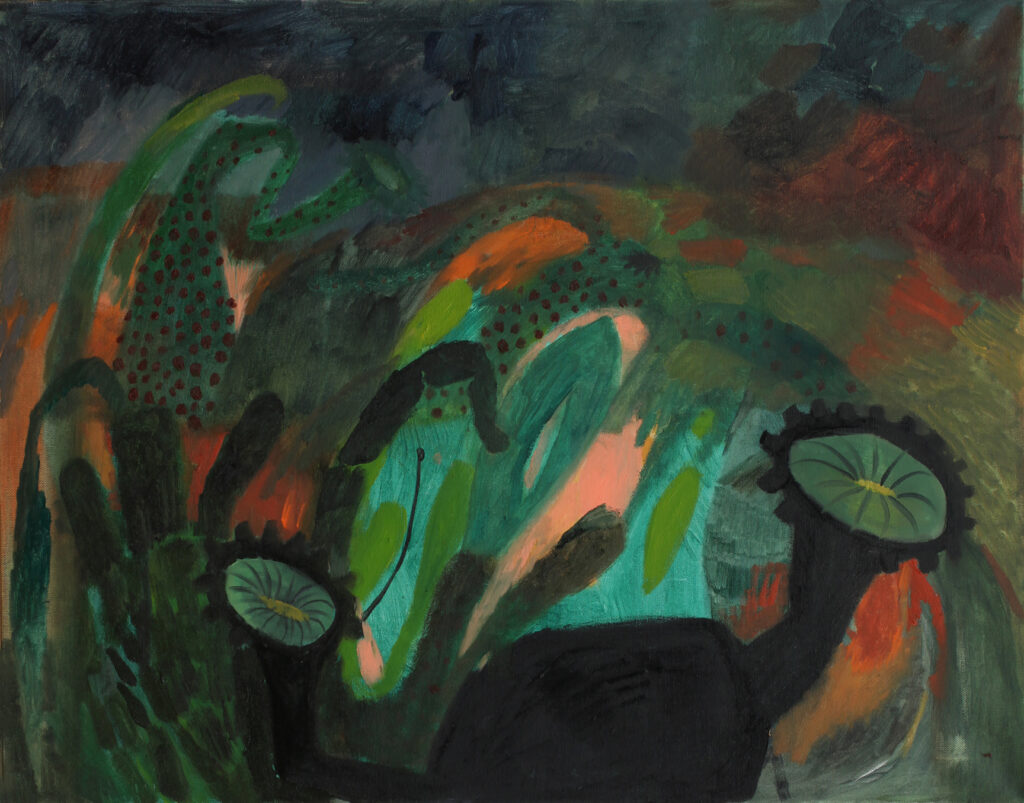
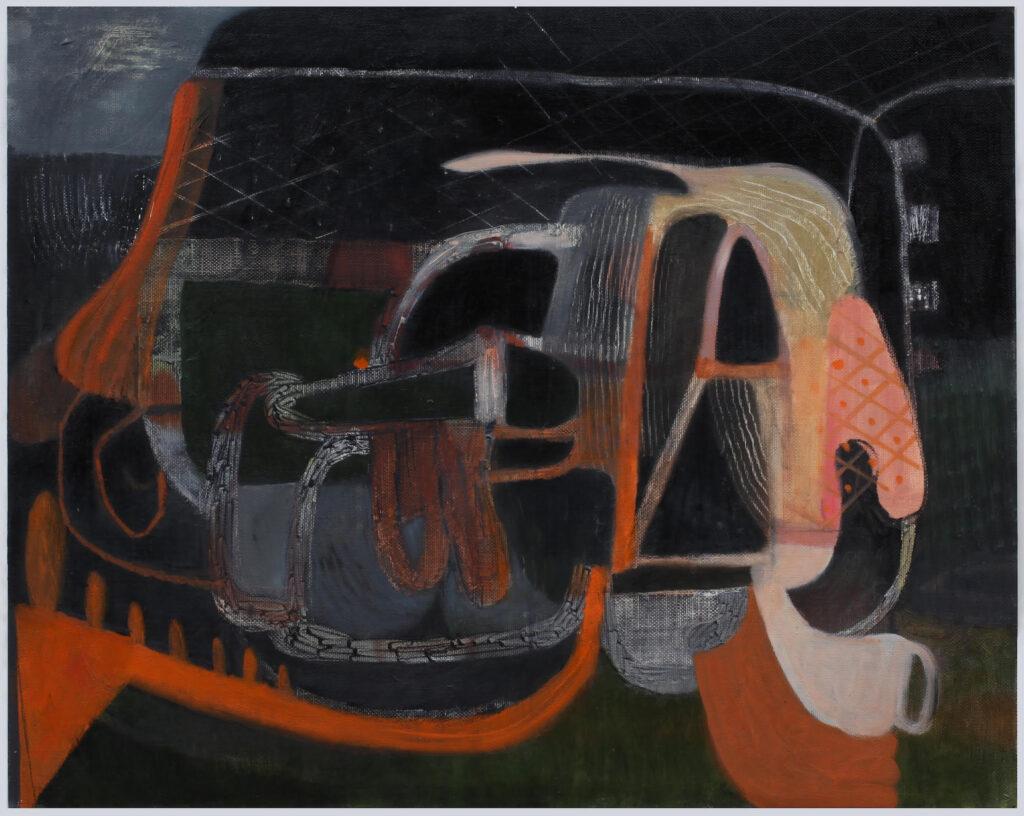
Painting
Soumya’s paintings are active, colorful, abstract, and organic shapes that fluctuate, sometimes consuming the entire canvas, pushing the perimeters of space. These bodies of shapes meld and move together, expanding and contracting, alluding to daydreams conjured straight from the imagination and the natural world.
Why did you choose painting as your primary medium?
I’m drawn to painting for so many reasons, some which are hard to articulate. It feels very natural to me, the reactiveness of it. I love watching how the paint interacts with the surfaces and how pigments mingle with one another. Each time I start working a new world opens up where I can get lost. I think I paint mainly for this reason; I’m addicted to the exploration and surprises.
Can you tell us about your painting process?
I try not to engage in any deliberate making. I don’t want to create paintings in my mind. My focus and engagement are with the nuances of the process of painting and drawing to see what is possible. It’s after working on a bunch of paintings that trends begin to emerge between them. Each painting must be able to live on its own. After completing many pieces, I sit down to see what they are saying to each other and to me. I’m interested in the little discoveries, the quiet questions, because it’s easier to move forward with those. This helps me and I add more tools in my toolbox. When I begin a painting, I focus on play with process and forms. I start with anatomy and use it like a child use LEGO bricks. It allows me to begin an exploration, and I never really know where I am headed.
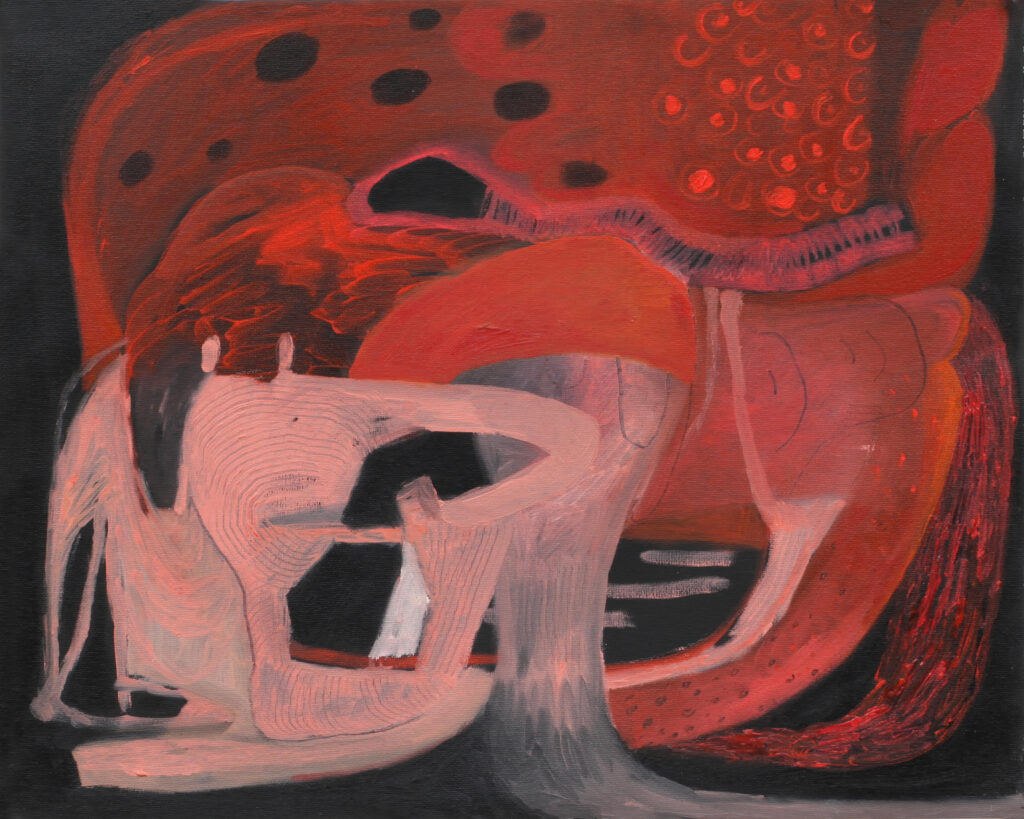
I have to let the paintings evolve along with the way I make them and the decisions I make about them. If a theme develops, its due to me not being resolved with what I’m making and replaying certain scenarios until I get bored and feel ready to move on. It’s in my nature to have a few trajectories going. I used to be frustrated that I was unable to stay consistent in my work, but then I came to realize that the frustration is crucial for my confidence and my practice.
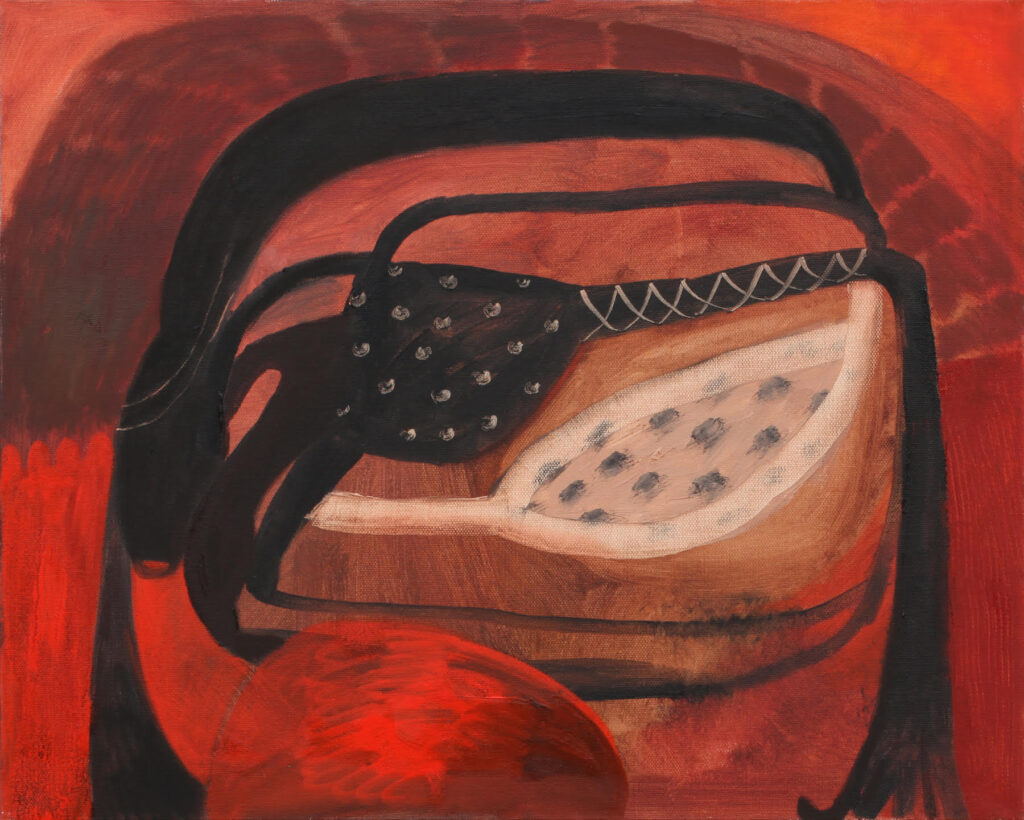
The color red is consistent in most of your work. How do you feel about this color?
My love for red is likely due to my Indian heritage. Red has been ubiquitous in my life. It’s rare to attend any Indian function and not be confronted by bursts of red tones in saris, flowers, fruits, etc. My imagination is continuously creating relationships with colors, maybe as a source of comfort. Whenever I relive memories of my early life in India, they are always sort of tinted with yellows and saffron. I’ve always played a silly game where I assign a color to everyone I know. Colors carry a symbolic significance for me and help me organize my memories, feelings and ideas.
How do you decide what colors to use?
I don’t plan out colors I will use before I start working. I tend to feel my way through, make a lot of mistakes, scrape down or wipe off and start again. I’m more interested in making discoveries rather than making descriptions for myself.
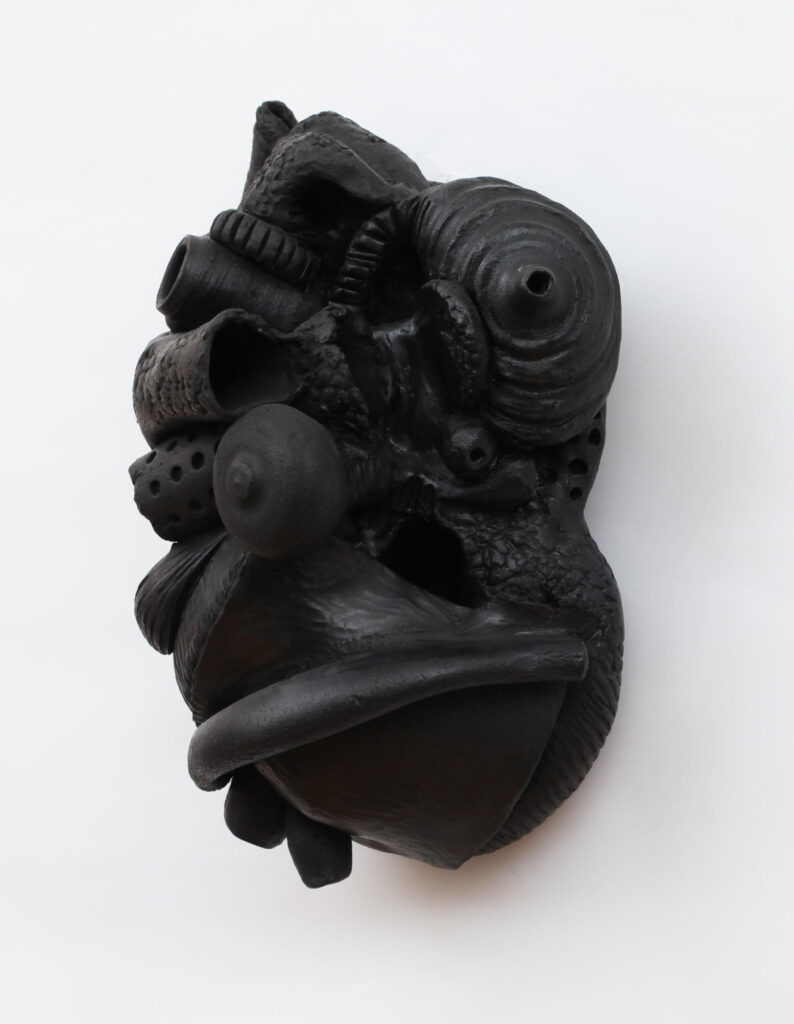
Ceramic Sculptures
Soumya’s sculptures are composed of miscellaneous parts and pieces that she shapes and bends to create invented, organ-like forms that are influenced by nature and anatomy. Primarily working with terracotta and stoneware, she translates her visions into physical forms that take on a life of their own.
Aside from painting and drawing, you also make ceramic sculptures. How did that come about?
Shortly after I had my daughter, a friend suggested signing up for a ceramics course with her at a local clay studio. Once I discovered the sensory aspect of it, I was hooked. Working with clay, its malleableness, it’s very addictive. It was like a revelation to find that connection. I like to see the forms moving into each other which clay allows me to achieve so beautifully. The preservation of movement, of change. I love the inherent honesty of the medium.
What about glazes? Do you make your own?
I have so much yet to learn about clay and glazes. I rely on glazes that are made by the studio where I work and tend to stay with the more thin or transparent ones: shino, red iron, celadon. I want to preserve the texture of the clay as much as possible. Often, I will leave my pieces unglazed or stain the fired clay.
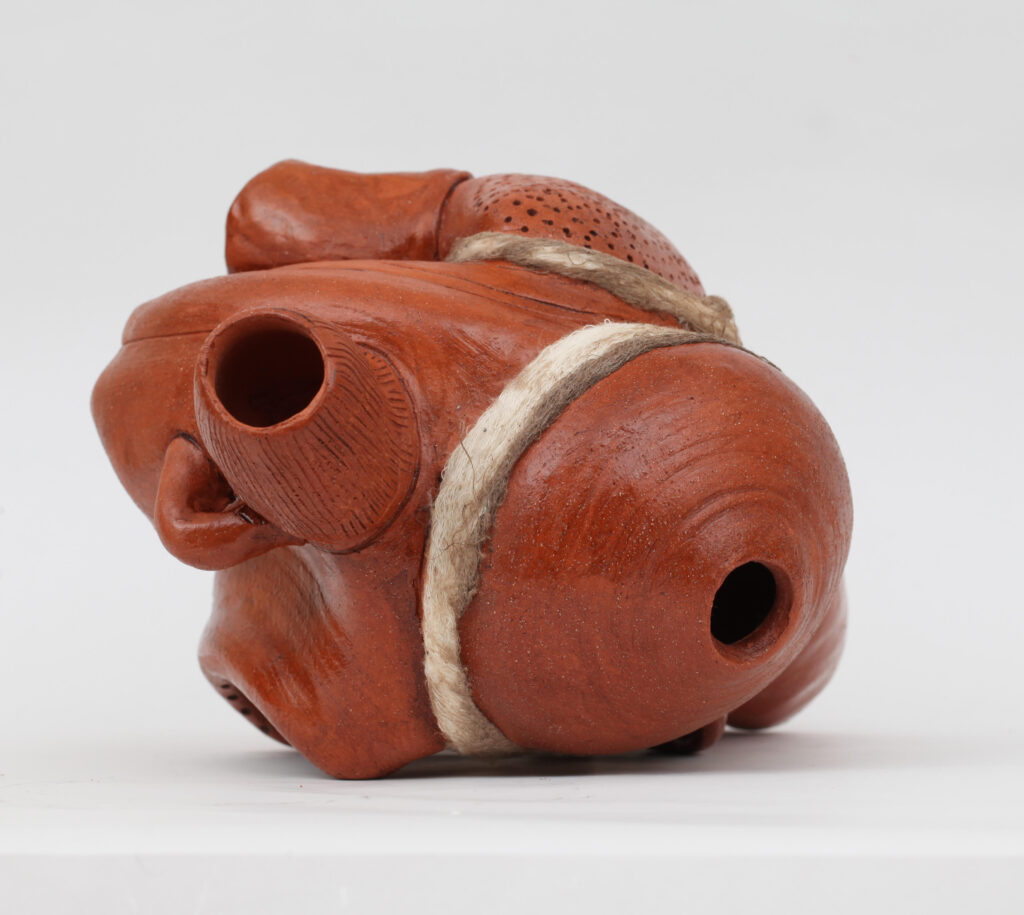

Studio Practice
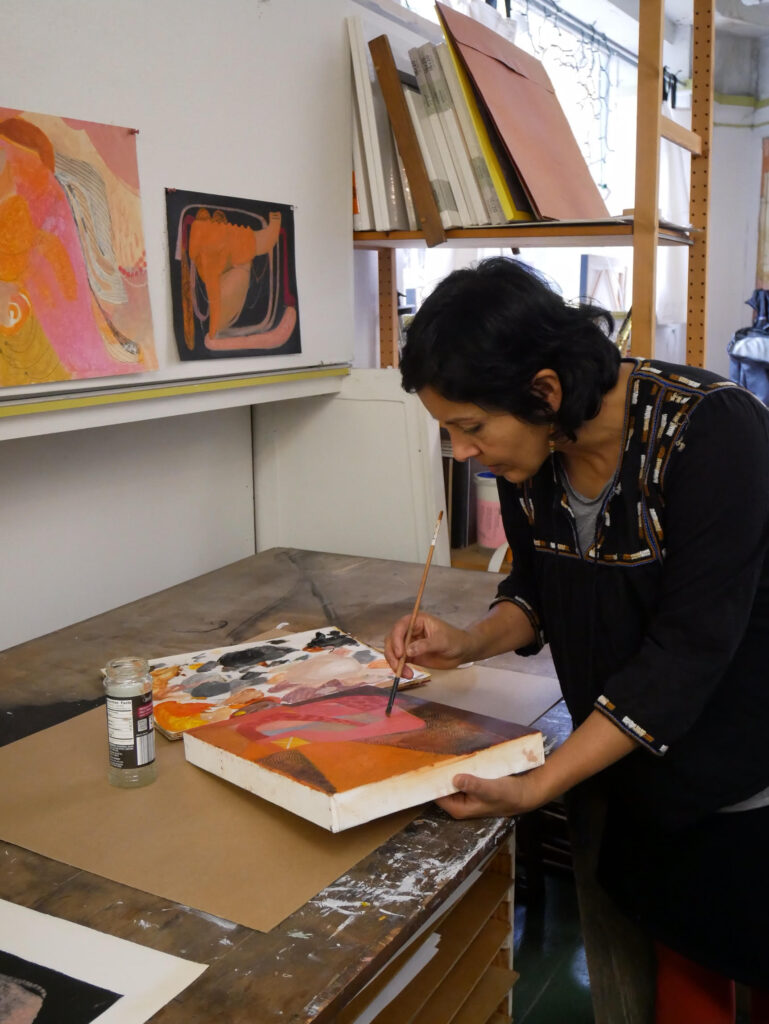
Tell us about your studio practice?
When I get to the studio, I get to work immediately. I try to stay disciplined. The structure of my day is important to me. I start the day doing small watercolor or ink drawings. I’ll read some news and spend a little time writing in a notebook: ideas or meditations on a poem, a reading or piece of art. I try to discover some new bit of information every day. I begin by playing with forms; it’s all about being surprised by what discoveries are made along the way. It’s important for me to sustain a feeling of play in my practice. I want to stay open to all the emotions that come my way in this venture, the successes and failures. It’s more important to stay in flux and open to possibilities.
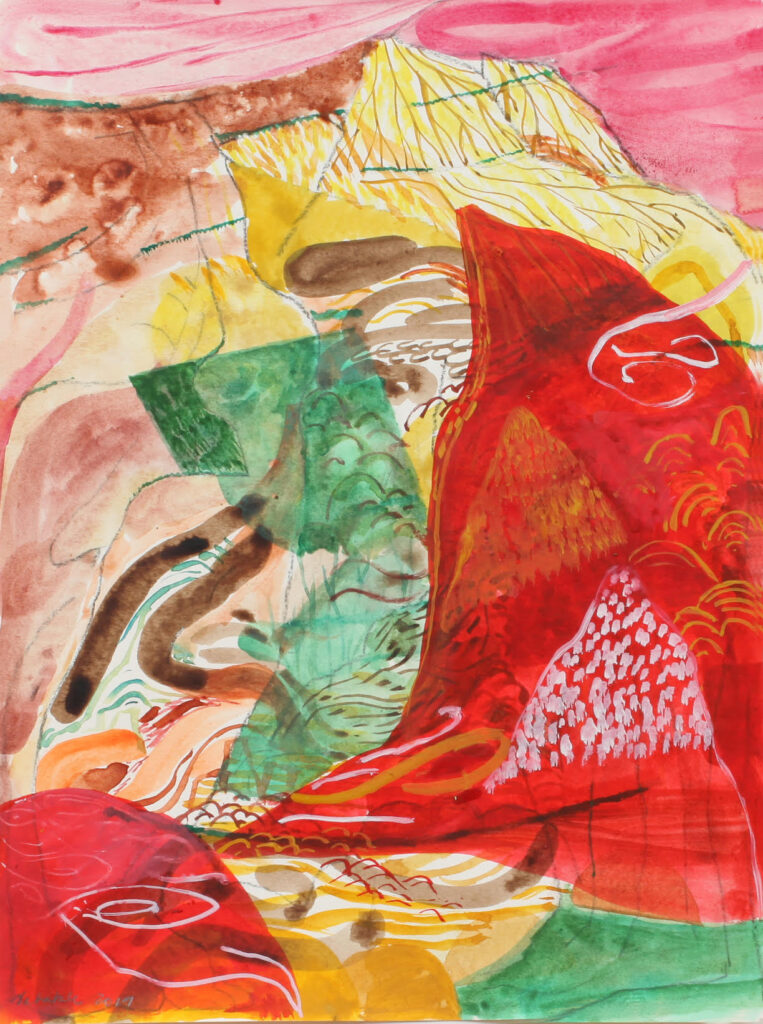
What are you currently working on?
I have been working towards a show in November, but that has now been pushed up to 2021 due to the COVID situation. It gives me more time to prepare work.
Soumya’s work is a part of an exhibition (Nothing But) Flowers at Karma Gallery in New York City running July 30th—September 13th 2020.
Soumya’s dedicated work ethic is inspiring and motivating. She is an artist who doesn’t hold back when it comes to exploring and testing the waters. Being open to new challenges and discoveries only strengthens her practice and we’re looking forward to seeing what’s yet to come from her brilliant imagination. You can follow Soumya’s work here.
Want to read more interviews with female artists?
